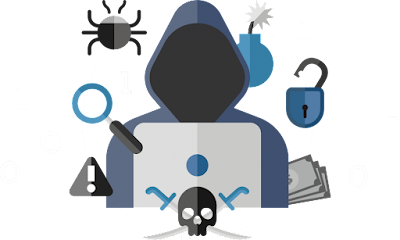A Beginner’s Guide to Cybersecurity
Cybersecurity is a vital topic in today's digital world, where cybercriminals are constantly trying to exploit the vulnerabilities of computer systems, networks, and data. Cyber attacks can cause serious harm to individuals, businesses, governments, and organizations, resulting in data breaches, identity theft, financial losses, and disruptions to online services. Therefore, it is important to understand what cybersecurity is, how it works, and how to protect yourself from cyber threats. In this blog post, we will cover the basics of cybersecurity, including what are cybercriminals and cyber attacks, what is cybersecurity and how does it work, what are the basic cybersecurity knowledge and skills for beginners, and what are the cybersecurity career paths and opportunities. By the end of this post, you will have a better understanding of cybersecurity and how to stay safe online.
What are Cybercriminals and Cyber Attacks?
Cybercriminals are individuals or groups who engage in illegal activities on the internet with the intention of causing harm, stealing sensitive information, or making financial gains. They use various techniques such as hacking, phishing, malware distribution, and other cyber attacks to exploit vulnerabilities in computer systems, networks, and individuals' online behavior. These activities can lead to data breaches, identity theft, financial losses, and disruptions to online services.
A cyber attack refers to a deliberate and malicious attempt to compromise computer systems, networks, or digital devices with the goal of stealing, altering, or destroying data, causing disruptions, or gaining unauthorized access. Cyber attacks can take many forms, including:
- Hacking: The unauthorized access or manipulation of computer systems or networks by exploiting security weaknesses or using stolen credentials.
- Phishing: The fraudulent attempt to obtain sensitive information such as usernames, passwords, credit card numbers, or bank account details by sending emails or messages that appear to be from legitimate sources.
- Malware: The malicious software that is designed to infect, damage, or control computer systems, networks, or devices. Malware can include viruses, worms, trojans, ransomware, spyware, adware, and more.
- Ransomware: A type of malware that encrypts the victim's data and demands a ransom for its decryption. Ransomware can lock the victim out of their system or threaten to delete or expose their data if the ransom is not paid.
- Denial-of-service (DoS) attacks: The intentional disruption of online services by overwhelming them with traffic or requests from multiple sources. DoS attacks can prevent legitimate users from accessing websites, applications, or servers.
- Distributed denial-of-service (DDoS) attacks: A type of DoS attack that involves multiple compromised devices (called bots) that are controlled by a hacker (called a botmaster) to launch coordinated attacks against a target.
- Man-in-the-middle (MITM) attacks: The interception and alteration of communication between two parties by a third party who pretends to be one of them. MITM attacks can be used to steal or modify data, eavesdrop on conversations, or impersonate identities.
- SQL injection attacks: The insertion of malicious code into a database query that can execute commands on the database server. SQL injection attacks can be used to access, modify, or delete data, bypass authentication, or execute remote commands.
These are some of the common types of cyber attacks that cybercriminals use to achieve their objectives. However, there are many other types of cyber attacks that are constantly evolving and becoming more sophisticated. Therefore, it is important to be aware of the cyber threats and take preventive measures to protect yourself from cyber attacks. In the next section, we will discuss what cybersecurity is and how it works.
What is Cybersecurity and How Does It Work?
Cybersecurity is the practice of protecting computer systems, networks, and digital information from unauthorized access, cyber attacks, and data breaches. It involves a combination of technologies, processes, and best practices that are designed to safeguard digital assets and ensure the confidentiality, integrity, and availability of data. Cybersecurity measures are implemented to prevent, detect, and respond to cyber attacks, and they include strategies like network defenses, encryption, authentication protocols, security policies, and ongoing monitoring to mitigate the risks posed by cybercriminals and their malicious activities.
Cybersecurity works by applying different layers of protection to computer systems, networks, and data. These layers can be categorized into three main domains: physical, technical, and administrative.
- Physical security: The protection of physical devices and infrastructure from unauthorized access, theft, damage, or sabotage. Physical security measures include locks, alarms, cameras, guards, fences, and biometric scanners.
- Technical security: The protection of software and hardware from cyber attacks, malware infections, data breaches, or unauthorized access. Technical security measures include firewalls, antivirus software, encryption, passwords, VPNs, patches, backups, and more.
- Administrative security: The protection of data and information from human errors, negligence, or misuse. Administrative security measures include security policies, procedures, training, audits, compliance, and awareness.
By implementing these different layers of security, cybersecurity aims to create a defense-in-depth strategy that can reduce the likelihood and impact of cyber attacks. However, cybersecurity is not a one-time solution that can guarantee complete protection from all cyber threats. Cybersecurity is a dynamic and ongoing process that requires constant vigilance and adaptation to the changing cyber landscape. Therefore, it is important to keep learning and updating your cybersecurity knowledge and skills. In the next section, we will discuss some of the basic cybersecurity knowledge and skills for beginners.
In our next post we will begin with the topic "Basic Cybersecurity Knowledge and Skills for Beginners"


Informative
ReplyDelete